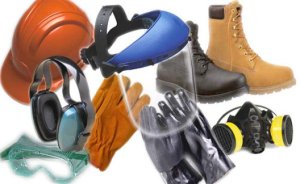
The purpose of using emergency personal protective equipment is to shield and protect health care providers and workers who are a rendering care in a related disaster event from any chemical, physical, biological and radiological hazards that may pose a risk when performing their duties in a disaster situation. Currently, the United States following the attacks and the aftermath of the World Trade Center attacks on 9/11 categorized and divided protective clothing and respiratory protective equipment into four distinct levels.
Four levels of emergency personal protective equipment
The following are categorized as emergency personal protective equipment based on the degree of contamination and protection in provides:
- Level A: Level A protection is typically used when the highest level of full respiratory, skin, eye and mucous membrane protection is required. This includes a self-contained breathing apparatus (SCBA) which is quite similar to the ones used by scuba divers, and a fully encapsulated, vapor tight, chemical resistant suit with chemical resistant gloves and boots for complete insulation of hazardous chemicals.
- Level B: Level B protection requires the highest level of respiratory protection but a lesser level of skin and eye protection than that of level A situations.
- Level C: Level C protective equipment requires air-purified respirator which uses filters or absorbent materials to remove harmful substances from the air. A chemical-resistant splash hood, chemical resistant gloves and boots are included in this category.
- Level D: Level D protection is the typical work uniform of health workers with their standard protection such as working/sterile gloves, face mask and eye shield which are normally available within the facility’s stockpile of supplies.
The need for emergency personal protective equipment
Disaster management especially those which involve chemical and biological substances stresses the importance of using personal protective equipment by health care providers to protect themselves from the harmful effects of radiation or similar substances which can harm them upon rendering care to victims in a disaster situation involving such toxic substances. It is imperative that emergency rescue providers and emergency department staff should have stand-by protective personal equipment in the unlikely event of a biological/nuclear/chemical related disaster or terrorist attack.
When to use emergency personal protective equipment
Level C and D of PPE are the levels most often used in hospital
facilities. Protective equipment must be donned prior to the actual contact with patients. The acute care facility’s standard precaution (levels C and D) are normally not adequate for protection from chemical, biological and radiological contaminated patients. The health care provider must use protective equipment that is more than capable of providing adequate protection against toxic agents. No single combination of PPE is capable of protecting against all types of toxic hazards. Under no circumstances should response providers wear any emergency personal protective equipment without proper training.
